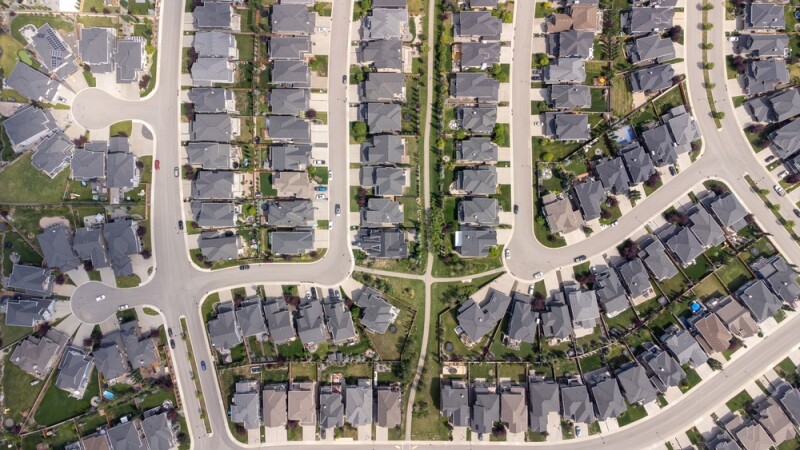Canada is grappling with a housing crisis, as skyrocketing prices push homeownership out of reach for countless individuals. While growth in the housing market is typically seen as positive, the dramatic increase in home prices – especially in cities like Toronto and Vancouver – has created significant challenges.
The housing shortage in Canada is estimated at around 3.5 million units, according to a 2023 report by the Canada Mortgage and Housing Corporation, representing the number needed to restore 2004 affordability levels. With average home prices surpassing C$700,000 in many areas, owning a home is getting increasingly unaffordable for many Canadians.
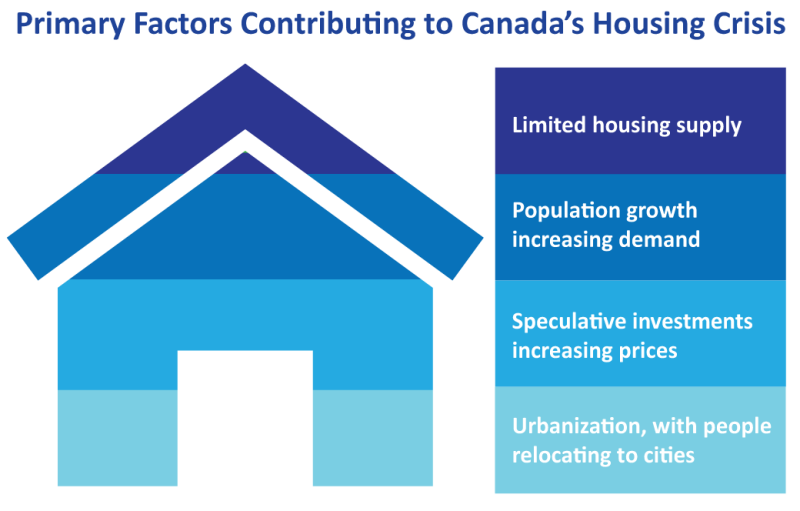
Digital twins offer innovative ways to address these challenges through improved urban planning, efficient construction processes, and better building maintenance. Richard Lyall, President of the Residential Construction Council of Ontario (RESCON), agrees: “Digital twinning is invaluable for running simulations to optimize future development in housing, infrastructure, mobility, and services like healthcare and education.”
Lyall, who has been advocating for solutions to Ontario’s housing crisis, believes the technology can be key in addressing housing supply issues by allowing developers, architects, and engineers to test changes that can accelerate and improve new builds. However, he adds that our current capacity to handle this work and effectively use the data is still limited. “The government has been slow to digitize and create mandates for this. We’ve been raising the issue for a decade now with very little progress. They don’t understand it,” he explains.
What is a Digital Twin?
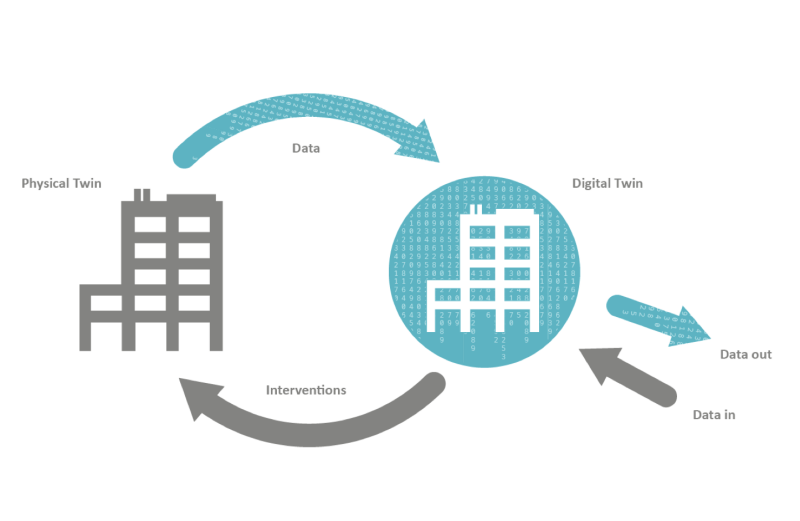
A digital twin – also referred to as a digital shadow, replica, or mirror – is a digital representation of a physical asset. According to buildingSMART, “Linked to each other, the physical and digital twin regularly exchange data throughout the PBOD [plan-build-operate-decommission] lifecycle and use phase. Technology like AI, machine learning, sensors, and IoT facilitate dynamic data gathering and real-time data exchange.”
In the housing sector, digital twins can simulate entire urban environments, allowing stakeholders to visualize, analyze, and optimize urban planning, construction processes, and building operations. This capability enhances efficiency, cuts costs, and improves performance across various stages.
Despite the potential of digital transformation to unlock economic, social, and environmental value, the broader adoption of digital twins has been slow. This is partly due to the fragmented nature of the built environment sector and a lack of common standards, as pointed out by a buildingSMART whitepaper.
These models enable stakeholders to simulate designs and improve cost management, enhancing efficiency across construction and operation stages. “They enhance design efficiency by allowing architects and engineers to test and refine designs in a virtual environment,” says Dwayne Torrey, Director of Construction & Infrastructure Standards at CSA Group, which produced the report Digital Transformation in the Canadian Built Asset Industry, in 2022.
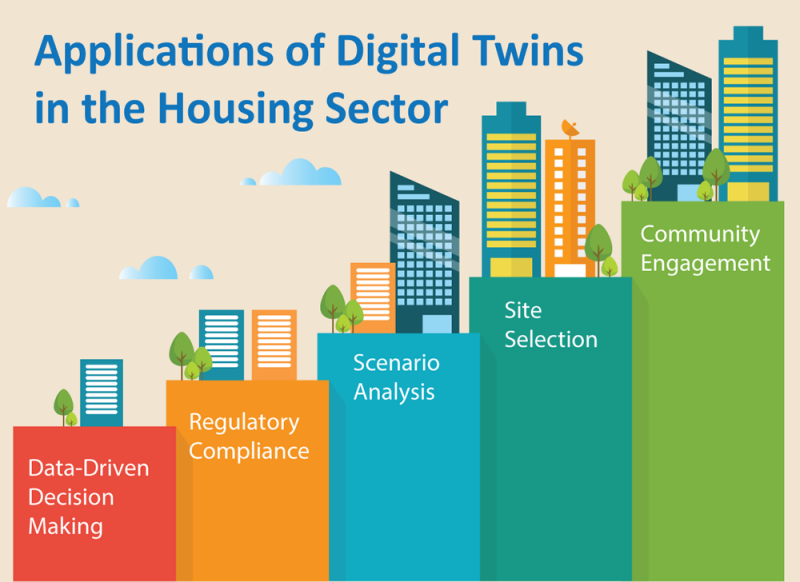
Enhancing Urban Planning and Development
Digital twins are a powerful urban planning tool, allowing cities to test ideas virtually before committing to real-world projects. They help planners assess the impacts of development projects on infrastructure and simulate the effects of zoning changes on housing, promoting efficient land use and minimizing sprawl. Arash Shahi, CEO of LandLogic, points out, digital twins also help ensure regulatory compliance by integrating building codes and streamlining site selection based on predefined criteria.

Digital twins can also play a key role in retrofitting existing buildings to create additional housing, says Karina Delcourt, Strategic Initiatives Manager at ETRO Construction. With the rise in commercial vacancies, many cities are transitioning these spaces into housing. Having an accurate digital twin of the building helps optimize this process.
Typically, unknown conditions like structural deficiencies or abandoned mechanical systems are only discovered during construction, causing delays and added costs. Work halts while fixes are made, resulting in time and material overruns. “A digital twin produced before the project begins can prevent these issues by scanning the building, mapping systems, and identifying challenges early. This upfront investment reduces risks and ensures modifications stay within budget and schedule, ultimately lowering costs,” explains Delcourt.
Streamlining Construction Processes
During construction, digital twins monitor progress in real-time, ensuring projects stay on track and within budget. “Digital twins also streamline inspections by providing a digital record of construction activities, allowing compliance with safety and building standards,” says Shahi.
Incorporating zoning laws and bylaws into digital twins helps architects and planners assess legal feasibility before starting a project.
Digital twins compare actual construction progress with the permitted design, identifying conflicts early and ensuring alignment with project specifications. As Torrey notes, “Digital twins provide real-time monitoring of construction sites, tracking progress and identifying issues early to reduce delays and cost overruns.”
While major infrastructure projects often face cost uncertainty underground, digital twins offer potential, though full realization is still some way off.
Peter Srajer, Chief Scientist at Prostar Geocorp, explains, a subsurface digital twin requires a digital twin of underground infrastructure and a geology digital twin. Digital twins of underground infrastructure have become a priority for many jurisdictions around the world.
“The emphasis has been on above-ground models due to the availability of technologies for capturing high-accuracy location data for above-ground infrastructure. Integrating subsurface infrastructure into the digital twin is crucial for obtaining a complete dataset,” says Srajer.
Improving Building Maintenance and Operations
Digital twins are crucial in asset management, allowing facility managers to track the condition and performance of building components over time. They help optimize maintenance schedules and maximize asset value. The predictive capabilities of digital twins enable building managers to identify maintenance needs early, ensuring timely interventions that reduce repair costs and enhance system reliability.
“Additionally, they optimize energy use and HVAC systems through real-time analysis, improving energy efficiency and reducing operating costs. Finally, they support predictive maintenance, helping to prevent costly repairs and extend the lifespan of building systems,” says Torrey.
“Since digital twins maintain a record of all modifications and maintenance activities throughout the building's lifecycle, they enable scenario testing, simulating the impact of renovation plans on building performance, costs, and regulatory compliance before implementation,” adds Shahi.
Standardizing Digital Twin Adoption in Canada
Digital twin adoption in Canada's construction industry is growing but remains limited. One of the major challenges is the lack of a national mandate for digital twins in the country. However, the Government of Canada’s broader Digital Ambition strategy encompasses aspects that could support the development and implementation of digital twins, particularly in improving infrastructure planning and management.
A survey by KPMG and Canadian Construction Association indicates that most construction firms have low digital maturity, with only 25% feeling competitive in technology and 23% making data-driven decisions. While cloud technologies are widely adopted, digital twins and other advanced tech are still underutilized.
KPMG highlights the need for government leadership in establishing a collaborative digital twin ecosystem. This requires market trust, unified policies, standards, and upfront investments for centralized coordination to unlock collective benefits.
Further, there is no standardized approach to digital twin modeling and interoperability in the country. The National Research Council Canada recognizes the need for developing standards and best practices to support widespread adoption of digital twin technology.
Earlier this year, the National Standard of Canada (NSC) introduced new standards for digital twins of built environments. These standards outline minimum requirements for the discovery and management of digital twins, focusing on data acquisition, organization, and location mapping.
“This standard takes us a step closer to the realization of accessible digital twins for the built environment by providing a common vocabulary for referring to their core concepts and components,” said Mark S. Fox, Director of the Urban Data Centre at the School of Cities, University of Toronto. Darryl Kingston, Executive Director of the Digital Governance Standards Institute, added, “We are excited to publish this standard and kick off the important work of building out standards to support the adoption of accessible Digital Twins for the built environment.”
Nicolas Arellano, Team Lead at Carleton Immersive Media Studio, Carleton University, believes the solution must come from a combination of top-down and bottom-up strategies. “All levels of government must agree on a shared vision—working closely with community groups, developers, and contractors. There is no time to let politics, ego, or profit get in the way of creating affordable housing. Success will only come through a multidisciplinary and collaborative effort,” he says.
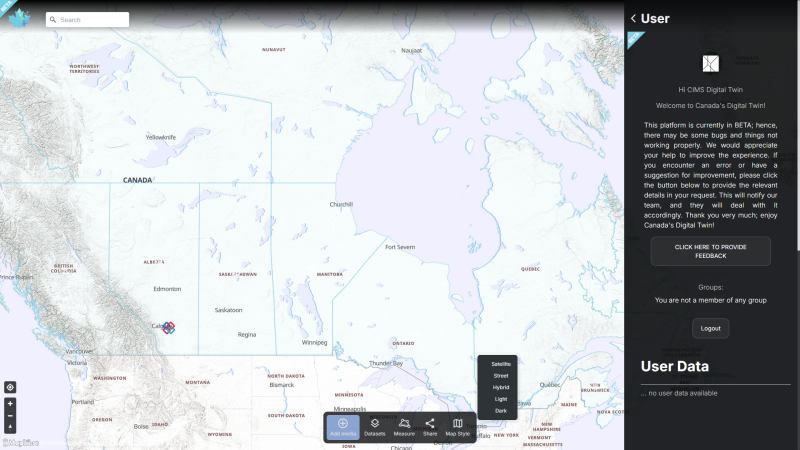
The goal is to utilize the digital twin platform to share geographically unique datasets within a national geospatial environment that also supports open BIM. This platform will enable stakeholders to visualize, compare, and contrast local, regional, provincial, and national efforts in near real-time, facilitating collaboration and knowledge sharing on what works and what doesn’t.
Ultimately, digital twin technology offers significant potential for transforming Canada’s housing sector. Cross-sector collaboration, including integrating data from housing, transportation, energy, and healthcare can enhance urban planning, improve transit, and support sustainable development.
“Looking ahead, integrating climate change modeling will be crucial in evaluating the benefits of various mitigation measures. As BIM and GIS continue to evolve, the incorporation of artificial intelligence (AI) will further enhance development processes and decision-making capabilities,” highlights Lyall.
With continuous innovation, the Canadian construction sector has the potential to bridge the digital gap and create more efficient, sustainable, and affordable housing solutions.


